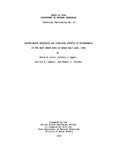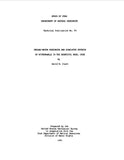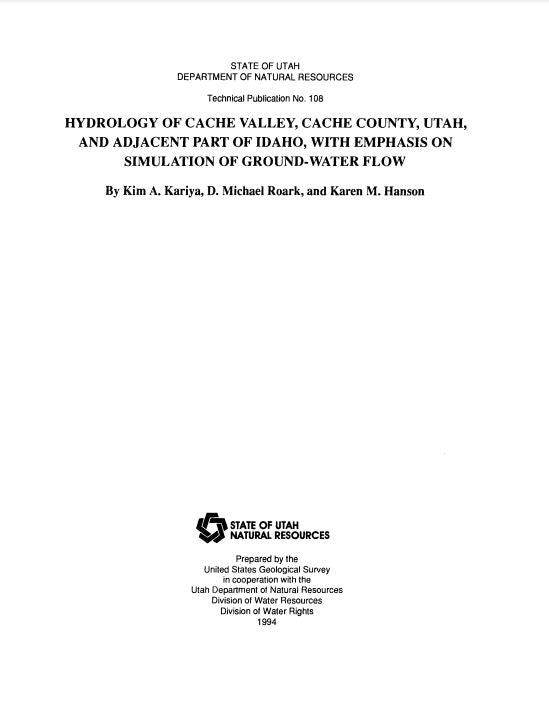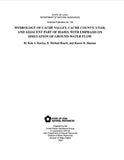Hydrology of Cache Valley, Cache County, Utah, and adjacent part of Idaho, with emphasis on simulation of ground-water flow (TP-108)
A hydrologic investigation of Cache Valley was done to better understand the ground-water system in unconsolidated basin-fill deposits and the interaction between ground water and surface water. Ground-water recharge occurs by infiltration of precipitation and unconsumed irrigation water, seepage from canals and streams, and subsurface inflow from adjacent consolidated rock and adjacent unconsolidated basin-fill deposit ground-water systems. Ground-water discharge occurs as seepage to streams and reservoirs, spring discharge, evapotranspiration, and withdrawal from wells.
Water levels declined during 1984-90. Less-than-average precipitation during 1987-90 and increased pumping from irrigation and public-supply wells contributed to the declines.
A ground-water-flow model was used to simulate flow in the unconsolidated basin-fill deposits. Data primarily from 1969 were used to calibrate the model to steady-state conditions. Transient-state calibration was done by simulating ground-water conditions on a yearly basis for 1982-90.
A hypothetical simulation in which the dry conditions of 1990 were continued for 5 years projected an average lO-foot water-level decline between Richmond and Hyrum. When increased pumpage was simulated by adding three well fields, each pumping 10 cubic feet per second, in the Logan, Smithfield, and College Ward areas, water-level declines greater than 10 feet were projected in most of the southeastern part of the valley and discharge from springs and seepage to streams and reservoirs decreased.
Additional Information:
Published: 1994Pages: 130











